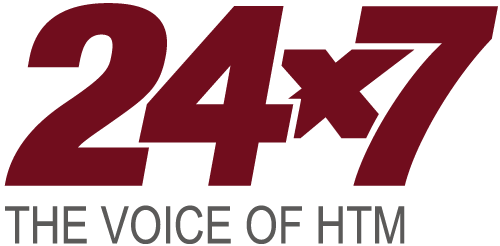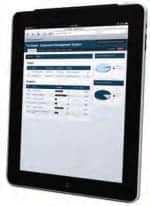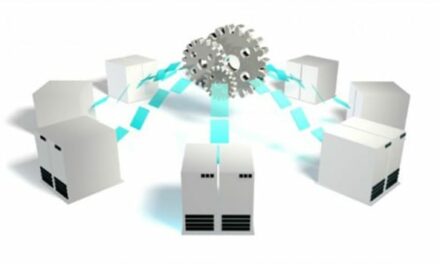To explore the latest trends and future developments in computerized maintenance management systems (CMMS) for 2025, 24×7 spoke with Chris Lang, vice president, product and strategy at FSI; Alan Gresch, vice president of HTM consulting for Phoenix Data Systems; Rich Sable, product manager at EQ2, LLC; and Amanda L Moser, director of business development at TruAsset.Here’s what they had to say.
24×7: How does your CMMS ensure seamless integration with other critical healthcare systems, such as cybersecurity platforms, real-time location systems (RTLS), and enterprise resource planning tools?
Gresch: AIMS 3 facilitates smooth integration with essential healthcare systems by providing a comprehensive audit trail to track actions and ensure compliance. AIMS 3 offers customizable notifications and alerts for real-time updates, along with a wide range of reports. The system’s unique automation feature, tailored workflows, and secure connections with ERP tools as well as RTLS, and cybersecurity systems support efficient, secure interoperability across healthcare networks. Phoenix collaborates with our customers to determine the best strategies for streamlining operations, saving time and labor dollars, and enhancing patient safety.
Lang: FSI prioritizes seamless integrations with other solution providers as a key pillar of operational efficiency for CMMS users. Customers can access FSI’s public API to create their own integrations – like the rounding integrations that have been created with Veoci and Sentact—or leverage out-of-the-box integrations with FSI partners. Currently, FSI offers seamless integration with PartsSource for sourcing and ordering materials, Fluke Biomedical OneQA for device testing, and Cynerio for device security workflows, with more in development. Plus, integrated RTLS with FSI’s View tool keeps asset locations accurate and visible in real time on dynamic digital floor plans.
Sable: EQ2 integrates with each of those types of applications as well as many other types. Most integrations use an EQ2 developed Application Programming Interface that enable a bidirectional interface for a robust experience. With the bidirectional interface, our HEMS One CMMS can push data to the external application and can receive real-time data from the external application such as security risks on specific devices and networking information, asset locations, or parts and price information. Essentially, EQ2’s HEMS One CMMS becomes the client’s asset management hub which collects and distributes data and can perform actionable events such as work order creation or email notification.
Moser: TruAsset seamlessly integrates with various cybersecurity platforms, enabling alerts to flow directly into the system. This allows technicians to efficiently open work orders to document necessary actions or dismiss alerts that are not applicable. Additionally, our RTLS data is stored at the asset level and updated dynamically through bi-directional integration. TruAsset also offers integrations with a range of other platforms, including test equipment automation, FDA recall systems, service request programs (though we also provide our own ticketing system), and a comprehensive document database.
RELATED: HTM Expert Roundtable: The Issues Driving HTM in 2024
24×7: How customizable is your CMMS to accommodate the unique workflows and priorities of HTM departments across various healthcare facilities?
Lang: FSI’s CMMS offers customization capabilities for the flexibility that HTM teams need. Users can build custom reports and dashboards, create custom default inputs, and set up standard naming conventions to keep data organized and clean. One of the latest additions to the platform is the ability to configure custom CMMS workflow automations with the Flow tool, allowing teams to set up automations that address their unique needs, supporting data integrity and adding efficiency where they need it most. Additionally, FSI offers ongoing customer support from in-house experts for personalized help identifying how to make the most of the platform in alignment with existing operations.
Sable: HEMS One is very customizable. For example as part of the CMMS implementation process, the EQ2 implementation team works with the HTM department to design workflows and management of regulatory compliance to ensure that both are able to be executed in the most optimal manner possible on a daily basis.
Even within a large healthcare system, it’s possible to have different workflows, work order priorities, or PM scheduling, especially when the healthcare system is across different states or regions that have different regulatory requirements. So customization is possible to accommodate those differences or to harmonize the work order priorities, PM scheduling, and PM procedures across the enterprise.
Gresch: AIMS 3 is highly customizable to align with the specific workflows and priorities of an HTM department. AIMS 3 provides automation to simplify repetitive processes, custom forms designed for particular workflows, and filtering options at both group and individual levels to ensure users only see the information that is relevant to their roles.
Moser: TruAsset offers a wide range of customizable settings and views across all areas of the platform, including notable features like the dashboard, workflow view screens, and service request module. As a TruAsset client, you’ll have access to a dedicated service and support team to assist with the setup and customization of your desired workflows. Additionally, this team is available to help with any modifications or process adjustments you may want to make at any time after the initial setup.
24×7: What specific cybersecurity features or partnerships does your CMMS offer to identify and mitigate vulnerabilities in connected medical devices?
Sable: HEMS One provides HTM professionals with the ability to store IT information for each asset along with defining a network risk profile for equipment models. HEMS integrates with cybersecurity solutions via an Application Program Interface for cybersecurity vendors such as Armis, Asimily, Cynerio, Medigate, and Ordr. These interfaces can automatically populate the IT fields in the system and workflow rules can be established to create work orders for affected devices or send email notifications to the proper personnel.
HEMS One can filter inventory based on any of the IT fields should your security information officer question a device’s ownership when malicious activity is detected on the hospital network. Additionally, the HEMS One ECRI interface can select inventory affected by a cybersecurity risk.
Lang: FSI’s CMMS partners with Cynerio to streamline device security workflows. This integration automatically creates a work order when vulnerabilities are detected in devices connected to the network. FSI has also built integrations with Asimily to streamline monitoring of connected assets and save our customers time.
Gresch: AIMS 3 integrates with cybersecurity platforms like Medigate, Asimily, Zingbox (Palo Alto Networks), and others to improve the visibility of medical device data. These integrations automatically update missing information, deliver real-time alerts, and generate work orders to address cybersecurity risks, enabling rapid mitigation of vulnerabilities in connected devices.
Moser: Currently, TruAsset integrates with Asimily, Palo Alto Networks, and Claroty (formerly Medigate). We are expanding this listing as client requests dictate.
24×7: Does your CMMS provide offline capabilities and mobile-first solutions to enhance the productivity of biomeds working in the field or remote locations?
Lang: FSI’s product suite is cloud-based for core access, however, we also offer a dedicated mobile-first solution that does function both on and offline to access and utilize the CMMS while in the field. FSI will also be launching a streamlined mobile app in 2025 for a straightforward on-the-go CMMS experience.
Gresch: AIMS Mobile is designed for offline use, enabling users to access and update information when in the field or remote locations without requiring a continuous internet connection.
Sable: EQ2 created the HEMS Remote mobile offline Android/iOS application for technicians working in the field or remote, non-networked, locations. When in areas without connectivity, technicians can work in offline mode with all work order information, updating each work order as they go, and then sync back to the main system later once online again with those updates.
HEMS Remote is optimized for both 2D and QR barcode operation where technicians can scan the equipment and retrieve the work order and they can find/edit/update existing work orders and create on-demand work orders. Additionally, HEMS Remote can be used to add new inventory into the HEMS One CMMS along with automated workflow to create the incoming inspection work order. And if the technician is in Wi-Fi range, reports and equipment history can be retrieved on the smartphone or tablet in the field.
Moser: TruAsset is a web-based platform that operates on any device with an internet connection. While an offline version is not currently available, data can be exported from TruAsset for use in situations where an internet connection is temporarily unavailable. As technology advances, internet connectivity is becoming more reliable and widespread, making this limitation increasingly rare. The advantage of working online is the ability to access updated information in real time.
24×7: What is your approach to ensuring a smooth implementation process, and what ongoing support and training do you offer to HTM professionals after deployment?
Moser: TruAsset is committed to providing a smooth and convenient onboarding experience for its clients. We offer various methods for data import, setup, and training, all tailored to ensure a seamless transition. Our goal is to minimize downtime, enabling clients to move from their previous system to TruAsset efficiently. In many cases, clients can close their old application on a Friday and begin using TruAsset, complete with fresh user training, by midday Monday. The onboarding process is then customized to align with the client’s specific needs, timelines, and feature requirements.
Lang: FSI prioritizes thorough implementations and ongoing support whenever it is needed. Implementations are conducted in-house with teams focused solely on the needs of healthcare teams, backed by the expertise of staff with hands-on biomed backgrounds who know what HTM departments need for success. FSI customers can leverage assistance from our dedicated Customer Support and Customer Success teams, monthly training webinars, and includes direct in-app training and documentation for learning more about the platform or refining existing skills.
Sable: EQ2 has 100%-U.S. based support and implementation teams and uses a phased approach to the implementation process to ensure a smooth transition from the prior CMMS to HEMS One. In the assessment phase, EQ2 and the HTM professionals discuss the critical information regarding regulatory compliance, reporting needs, nomenclature, workflows, and scheduling to name a few processes.
Additionally, HTM presents their intended desires for HEMS One along with all integrations with other information systems. Essentially, communication between HTM professionals and the EQ2 implementation team is the key in the assessment phase which allows EQ2 to build a mutually agreed upon project roadmap to meet the requirements set out by the HTM professionals.
The training requirements are also discussed in the assessment phase, and EQ2 performs staff training in the test environment, so managers and technicians can use a system with their data. Each training session focuses on the tasks developed in the assessment phase for each group of workers. Afterward, EQ2 will conduct a follow-up training session for the groups after the implementation and after the users have started using HEMS One. Finally, EQ2 addresses training issues as part of their support, so the HTM professionals can always reach out for clarification or direction with program usage.
After implementation, support for the product is provided by our US based team via email, phone, video conference, screenshare, etc, depending on the particular support request/need.
Gresch: Phoenix ensures a smooth implementation process by providing in-house project managers from the Phoenix team, all of whom have extensive industry implementation experience. They assist with workflow processes and data conversion. We conduct a current state assessment before implementation and take a consultative approach, applying industry best practices. Our customer support is industry-leading, and we offer tailored training before, during, and after implementation, customized to the specific roles and needs of HTM professionals.
24×7: How does your CMMS assist in meeting evolving healthcare regulatory requirements, including tracking compliance metrics and preparing for audits and inspections?
Gresch: Phoenix is committed to staying up-to-date with evolving healthcare regulatory requirements by tracking the latest updates, participating in compliance-focused forums and industry events, and sharing best practices with customers. AIMS 3 helps track compliance metrics, provides tools for audit and inspection preparation, and offers dedicated support during these processes. Additionally, Phoenix’s VP of HTM Consulting leads several sessions each year through AAMI’s Expert Insights program, titled “Mastering HTM Accreditation Compliance: Stress Less, Achieve More,” where proven methods for using CMMS to achieve compliance are shared.
Lang: As a healthcare-centric CMMS, FSI understands the role regulatory compliance plays in biomed operations and the challenges it can present. One of the tools that all FSI customers can use are the dedicated compliance reporting within the CMMS, eBinders. These dashboards display each element of compliance along with visual indicators to monitor their status and stay inspection ready. For an added level of ease for compliance, the eBinders solution offers organized, searchable digital binders with the ability to quickly print reports with exactly what surveyors need—no need to spend time sifting through bulky physical documentation.
Sable: EQ2 is a member of AAMI, and regularly attends AAMI and other HTM conferences and webinars where our team keeps up on the latest requirements for regulatory compliance. HEMS One can be configured to meet each health system’s regulatory requirements for alternative equipment management or manufacturer-recommended procedures along with the required preventive maintenance intervals.
With the rules configured in the CMMS, the regulatory report and dashboards track the department’s compliance with the dashboards providing a real-time view as regulatory work orders are being completed. Using dashboards and accompanying reports, the HTM professional can easily demonstrate their adherence to the regulations along with the ability to present the schedules or AEM versus OEM inventory. HEMS One can also create PDF books to present completed work orders for a single department, especially for [College of American Pathologists] inspections.
Moser: We provide a variety of setup options within our CMMS to accommodate different levels of data, offering the flexibility needed to meet compliance requirements for regulatory agencies such as Joint Commission, DNV, CMS, and state accrediting bodies. The system can be configured to generate specific alerts, such as for CNL issues or consecutive back-to-back repairs. Additionally, certain functionalities can be automated to align with the client’s established procedures. A customizable dashboard allows each user to monitor KPIs relevant to their role, while automatic system notifications support goals related to service response times, parts inventory management, and technician PO requests.
24×7: What role is AI playing in CMMS both now and into the future?
Sable: AI is gaining attention with HTM professionals and database administrators, and EQ2 is listening to their needs and actively developing AI into HEMS One. Natural Language Processing (NLP) will make interacting and using HEMS One more user-friendly by interacting with the CMMS via voice or text. NLP will assist HTM professionals with report generation or with the HELP system.
Moving into the future, AI will be able to assist with identifying trends in preventive maintenance readings or creating schedules based on service history. Additionally, AI can optimize spare parts inventory management and predictive maintenance, so a medical device can be serviced before failing. AI will continue to play a role in CMMS moving into the future, and EQ2 will continue to enhance our use of AI in HEMS One.
Lang: FSI is currently developing AI capabilities, and as with all of our product and development efforts are doing so in collaboration with our customers. We see AI playing an integral role in accessing, evaluating, and reporting on asset performance as well as team productivity now and in the future. Additionally, we envision AI playing a major role in revolutionizing workflows and ushering in a new era of intelligent solutions which will lead to remarkable customer experiences and contribute to our partners’ continued success.
Gresch: Phoenix understands the growing importance of AI in CMMS, utilizing it for predictive maintenance, advanced analytics, and analyzing historical repair data to optimize workflows and enhance decision-making. We anticipate that AI will increasingly contribute to notifying users about equipment location, availability, and utilization. It will also provide recommended solutions for equipment failures and offer easy access to remote technical experts—all seamlessly integrated into your CMMS.
Moser: AI implementations could encompass various applications, such as predictive maintenance, automated workflows, duplicate reduction, compliance monitoring, and data-driven insights. Even straightforward solutions, like minimizing duplicate vendors and manufacturers, can significantly reduce administrative burdens. This allows for more time spent working on equipment and less time tied to a computer.





